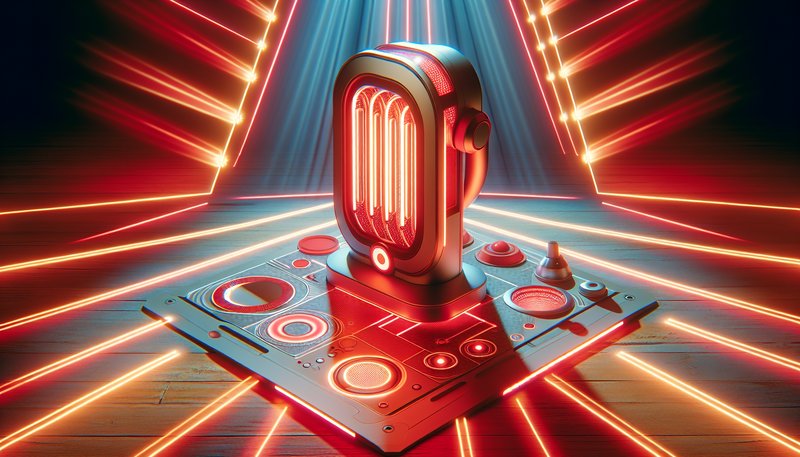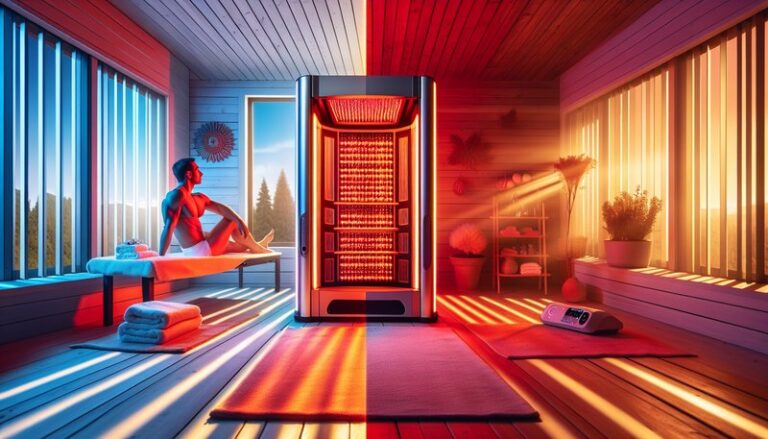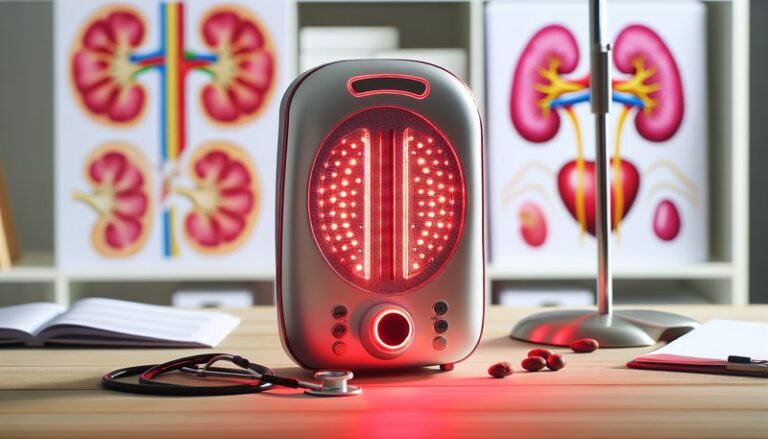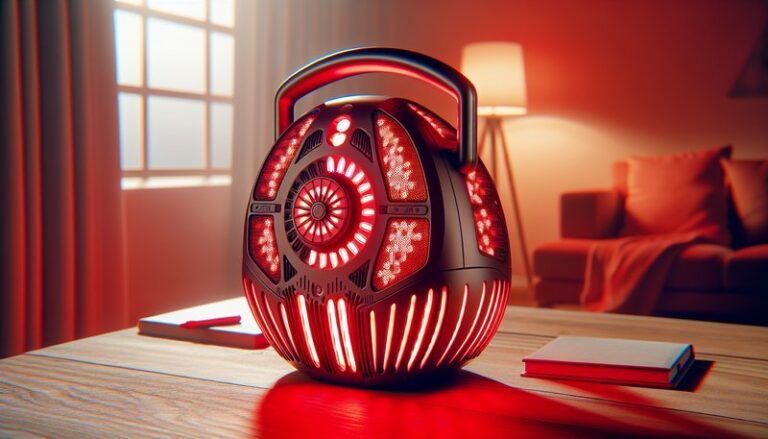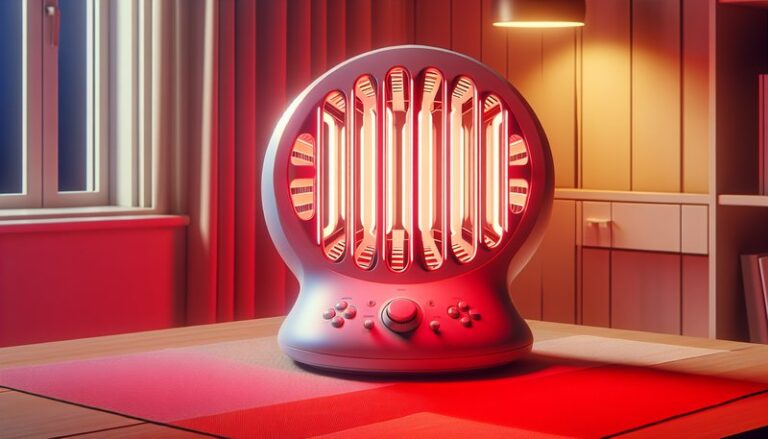Do Red Light Therapy Devices Work?
Is Red Light Therapy the key to health and wellness that many claim it to be?
For an in-depth look, see Does Red Light Therapy Raise Testosterone?
In recent years, red light therapy (RLT) has gained attention as a potential treatment for various health concerns, from skin conditions to pain relief. This article will explore the science behind red light therapy, its benefits, how it works, and whether it is worth considering for your health regime.
Key Takeaways
- Red light therapy uses specific wavelengths of light to improve various health conditions through cellular function enhancement.
- Benefits of red light therapy include improved skin healing, pain reduction, and enhanced muscle recovery.
- While RLT shows promise, potential users should consider safety, cost, and individual health needs before beginning treatment.
What is Red Light Therapy?
Red light therapy is a non-invasive treatment that involves using low-level wavelengths of red light to penetrate the skin and stimulate various physiological processes. These wavelengths are typically within the range of 600 to 950 nanometers.
RLT promotes healing by encouraging cellular function, boosting energy production within the mitochondria, and increasing circulation. This therapy has applications in dermatology, pain management, and physical rehabilitation, making it a versatile choice for various health-related concerns.
The devices used for RLT include handheld units, light panels, and even full-body beds. Each device emits specific wavelengths of light designed to target different issues effectively.
What are the Benefits of Red Light Therapy?
When considering red light therapy, it’s important to explore its potential benefits, which are supported by emerging research.
Skin Health and Anti-Aging
Red light therapy is renowned for its ability to enhance skin health. Studies suggest that it can improve skin texture, reduce wrinkles, and promote collagen production. Many users report visible results in skin rejuvenation after consistent treatment. For example, some patients with acne or rosacea have found significant improvement in their skin condition following RLT sessions.
Pain Relief and Inflammation Reduction
Numerous studies have indicated that red light therapy can alleviate pain associated with conditions like arthritis, muscle injuries, and joint pain. RLT works by reducing inflammation and accelerating healing processes. Patients undergoing physical therapy often use RLT to enhance recovery and manage pain more effectively.
Enhanced Muscle Recovery and Performance
Athletes have begun to adopt red light therapy to improve muscle recovery after intense workouts. RLT can help reduce muscle soreness and improve stamina by increasing blood flow and lowering oxidative stress. Research has shown that athletes using RLT can recover faster and perform better during training.
Improved Mood and Sleep Quality
Emerging evidence suggests that red light therapy may positively impact mood and sleep. By regulating circadian rhythms, RLT can help individuals experience better sleep patterns, leading to overall enhanced well-being.
Is it Possible to Use Red Light Therapy at Home?
Yes, using red light therapy at home is entirely feasible and increasingly popular. There are various devices available for personal use, making it convenient for individuals to integrate RLT into their routine.
What are the Advantages of Home Use?
Using red light therapy at home offers several benefits, including:
-
Convenience: Personal devices allow for flexible use at your preferred times without the need for clinic visits.
-
Cost-Effective: Although an upfront investment is required for a personal device, it can lead to savings over time compared to multiple professional treatments.
-
Privacy: Using RLT at home provides a comfortable and private setting, which can be appealing to many users.
What are the Disadvantages of Home Use?
Despite the advantages, there are some potential downsides to consider:
-
Limited Guidance: Home users may lack professional supervision, leading to improper use of the device.
-
Quality of Devices: Not all home devices are created equal; some may not offer the effective wavelengths or intensity required for optimal results.
-
Time Commitment: While convenient, regular treatment schedules must still be maintained for effective outcomes.
What are the Things to Consider Before Using Red Light Therapy?
Before embarking on red light therapy, it’s important to consider several key factors.
Safety
Ensure that the device you choose is FDA-cleared or approved for safety and efficacy. Performing a patch test for skin sensitivity can also help mitigate risks.
Condition-Specific Needs
Identify the specific health concerns you aim to address. Different conditions may require different wavelengths or intensities of light, so it’s wise to do some research or consult a professional.
Cost and Investment
Evaluate the costs associated with both professional and home devices. While at-home devices can save money in the long run, initial costs can be significant.
What are the Alternatives to Red Light Therapy?
If red light therapy doesn’t seem like the right fit, there are alternative treatments available.
Cold Laser Therapy
Cold laser therapy, similar in principle to RLT, uses low-level lasers to target tissues and promote healing. It’s often used in clinical settings for pain management and injury recovery.
Ultrasound Therapy
Ultrasound therapy uses sound waves to penetrate soft tissue and promote healing. It’s commonly used by physical therapists to treat various musculoskeletal conditions and reduce inflammation.
Learn the full details in Duration of Red Light Therapy for Wrinkles?
Cryotherapy
Cryotherapy involves exposing the body to extremely cold temperatures to stimulate healing. This method is popular among athletes for muscle recovery and pain management.
Conclusion: Is it Recommended to Use Red Light Therapy?
Red light therapy offers a variety of benefits, from improved skin health to pain relief and enhanced muscle recovery. However, potential users should carefully consider individual needs, safety, and the type of device used. Overall, if you’re seeking a non-invasive treatment option and are willing to invest the time and resources, red light therapy may be worth pursuing.
Frequently Asked Questions
How long does a red light therapy session typically last?
A red light therapy session usually lasts between 10 to 30 minutes, depending on the device used and the extent of treatment required.
How often should I use red light therapy for best results?
It is generally recommended to use red light therapy 3-5 times a week for optimal results, but this may vary based on individual goals and device specifications.
Is red light therapy safe for everyone?
While red light therapy is considered safe for most individuals, those with specific medical conditions or certain medications should consult a healthcare provider before use.
Can I use red light therapy for hair growth?
Emerging studies suggest that red light therapy may assist in hair regrowth for some individuals suffering from hair loss. Dedicated devices for scalp treatment are available on the market.
What should I look for when purchasing a red light therapy device?
When selecting a device, consider factors such as wavelength, power output, treatment area size, and customer reviews to ensure effectiveness and safety.
